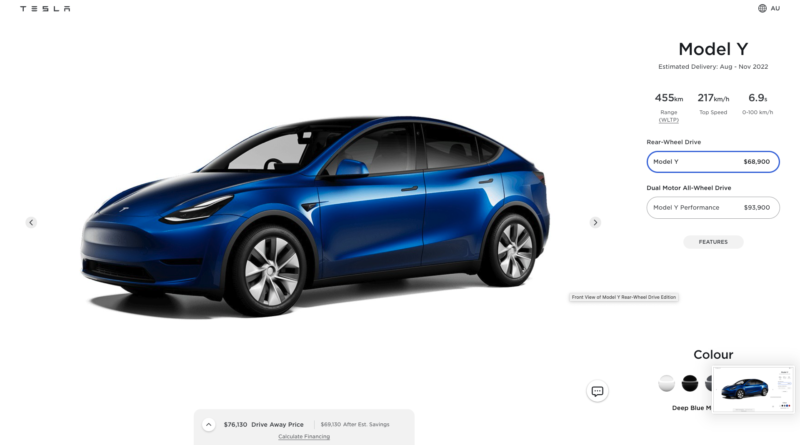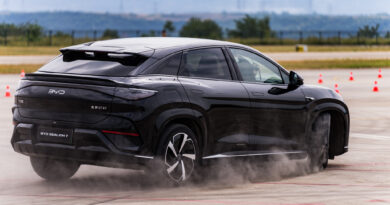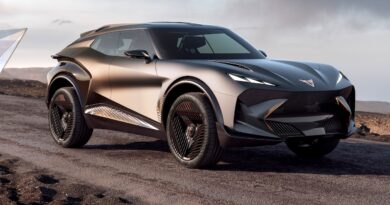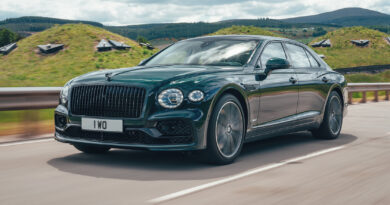Tesla Model Y now on-sale in Australia
Finally. Three years after it was first revealed the Tesla Model Y SUV is on-sale in Australia.
Expected to replace the Model 3 passenger car as Australia’s top-selling electric vehicle, the Model Y is being offered in two five-seat models with pricing starting at $68,900 including GST but before on-road costs (and about $74,000 on the road).
That’s for the entry-level Rear-Wheel Drive model while the all-wheel drive Performance starts at $98,689 (including luxury car tax) and about $105,000 on the road.
UPDATE: Tesla Model Y prices up by 5% – one week after it went on sale
A rear-wheel drive Long Range model is also expected to go on-sale in Australia in the future. During embargoed media previews in late 2021, Tesla Australia displayed three different models.
Read more about the Model Y here.
The cheaper Model Y’s pricing means it misses out on Victorian and NSW government EV incentives – by around $150 – but it still qualifies for stamp duty savings in NSW.
It is also $5000 more expensive than the cheapest Model 3.
Tesla Model Y delivery times
Orders placed now via the Tesla website for the entry-level Model Y are estimated to be filled in August and November, while the Performance is late 2022 to early 2023.
UPDATE: Tesla Model Y wait times grow within hours of going on sale
By comparison Tesla says the Model 3 is on a 9-12 month order backlog.
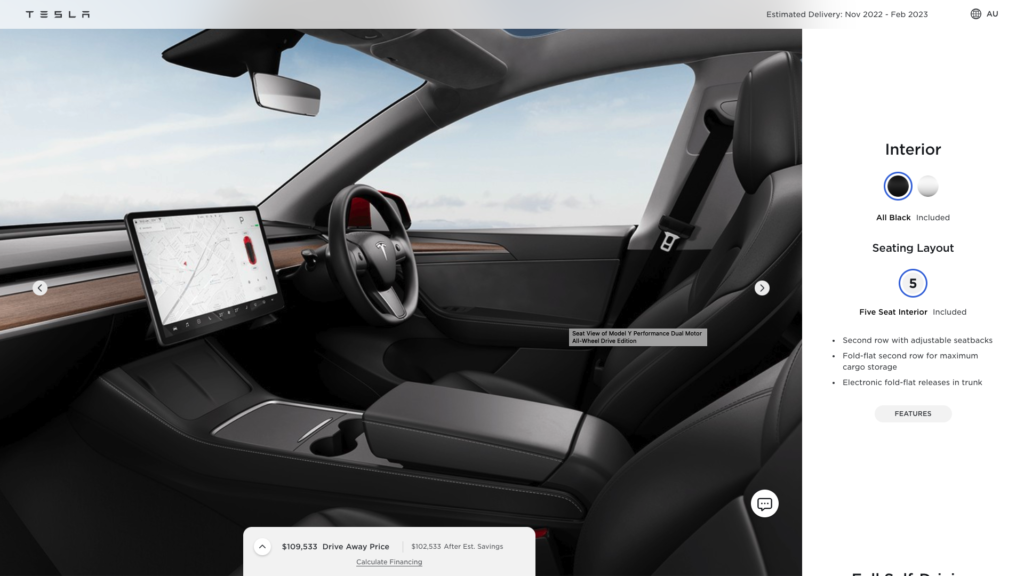
The Rear-Wheel Drive is powered by a single 220kW e-motor and comes with a claimed 455km range and the ability accelerate from 0-100km/h in 6.9 seconds and a 219km/h top speed.
The 393kW dual-motor Performance has a 514km range thanks to a larger battery pack, a stellar claimed 0-100km/h acceleration time of 3.7 secs and 250km/h top speed.
The Rear-Wheel Drive weighs in at 1909kg and the Performance 1997kg.
Model Y specifications confirmed
The Model Y includes 19-inch alloy wheels, five seats, faux leather, 15-inch infotainment screen, four USB-C ports, wireless charging for two phones, 12-way power front seats, heated seats front and rear, heated steering wheel, tinted glass roof and smartphone entry and exit.
Move into the Performance and you score 21-inch wheels, meatier Performance brakes, lower suspension, aluminium pedals and LED front fog lights.
As per other Tesla models, over the air updates are also part of the package.
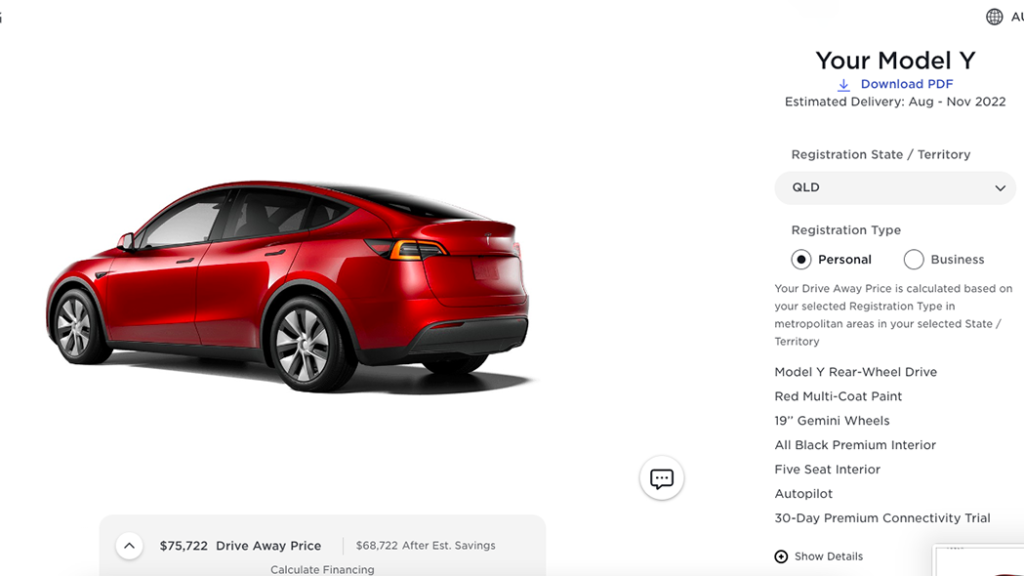
If you want Full Self-Driving Capability – navigation on Autopilot, Auto Lane Change, Autopark, Summon, Full Self-Driving Computer and Traffic Light and Stop Sign Control, this is a $10,100 pack on both models.
While the US’s Model Ys have the options of seven seats, this isn’t showing as an option on Australian-delivered cars.
Tesla quotes 2158L of cargo space with rear seats folded, or 854L (to the roof) with rear seats in place. These capacities include the frunk.
Exterior paint options include pearl white multi-coat, solid black, midnight silver metallic, deep blue metallic and red multi-coat.
The interior all black premium but black and white is optional.
The Rear-Wheel Drive rolls on 19-inch Gemini wheels but can be upgraded to a 20-inch Induction design. The performance comes with 21-inch Uberturbine wheels.
Model 3 vs Model Y
The Model Y costs $5000 more than the Model 3. So, what’s the diff between them?
The biggest difference between the two is the body. The Model Y is 56mm longer than the 3, 72mm wider and 181mm taller.
But there is also more equipment in the Model Y.
Key differences for the Model Y Rear-Wheel Drive versus the Model 3 Rear-Wheel Drive include:
- Interior: the Model Y gets the Premium Interior whereas the Model 3 gets only a Partial Premium Interior; some of that is covered off with feature differences listed below.
- Sound system: the Model Y gets a 13-speaker sound system (versus eight in the Model 3) with a subwoofer and two amplifiers. There are also tweeters towards the front of the dash, mid-range speakers in the top of the A-pillars (windscreen pillar) and two speakers in the tailgate.
- Wheels: the Model Y gets 19-inch alloy wheels versus 18-inch wheels on the Model 3 RWD. Both get plastic wheel covers over alloy wheels (chosen to improve aerodynamics and, therefore, driving range).
- Back seats: the Model Y’s back seats can fold electrically (but need to be manually put back up) while the 3’s are manual only. The Model Y also has a 40/20/40 split-folding back seat versus 60/40 for the 3.
- Interior lighting: the Model Y has ambient lighting whereas the 3 doesn’t.
- Windows: the rear glass on the Y has a darker tint than that of the 3. The rear side windows are also double glazed, matching those of the front (the 3 only has double glazing on the front).
- Ventilation: the Y gets a HEPA filter for the much-hyped Bioweapon Defense Mode claimed to remove pollen, bacteria and air pollution.
The main area the 3 has advantages over the Y is with performance and efficiency. Blame it on weight.
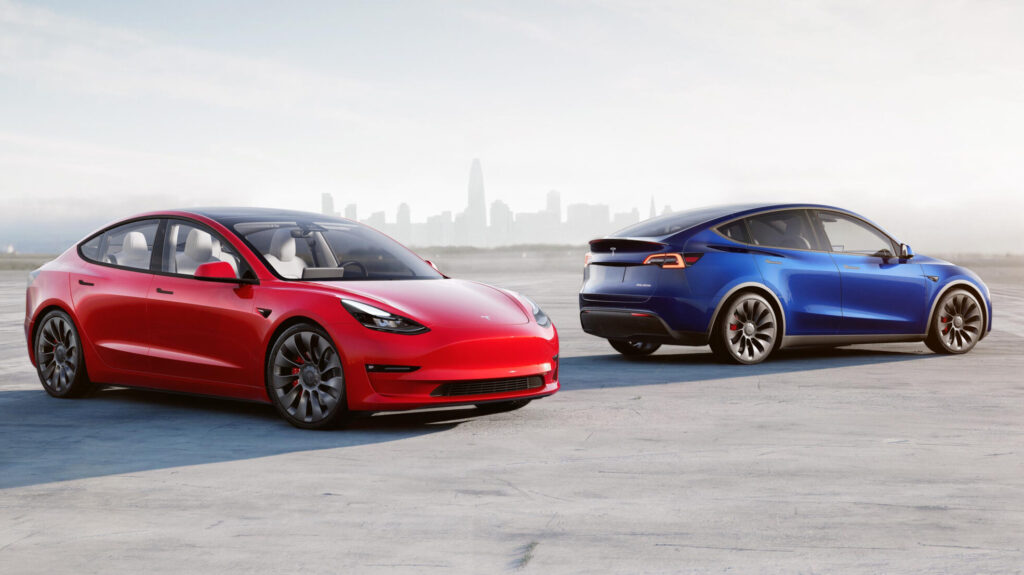
Tesla says the Model Y RWD is 1909kg, which is 157kg heavier than the 3. That in turn makes it slower to 100km/h (6.9 seconds claimed versus 6.1 seconds).
The Y’s range is also 455km, some 36km less than the 3 with the same basic mechanical package.
As for the Model Y Performance versus Model 3 Performance, there’s less to split them in raw features. That’s because each already gets the Premium Interior.
The biggest difference between the two is wheels. The Model 3 Performance gets 20-inch wheels whereas the Model Y Performance gets 21s.

